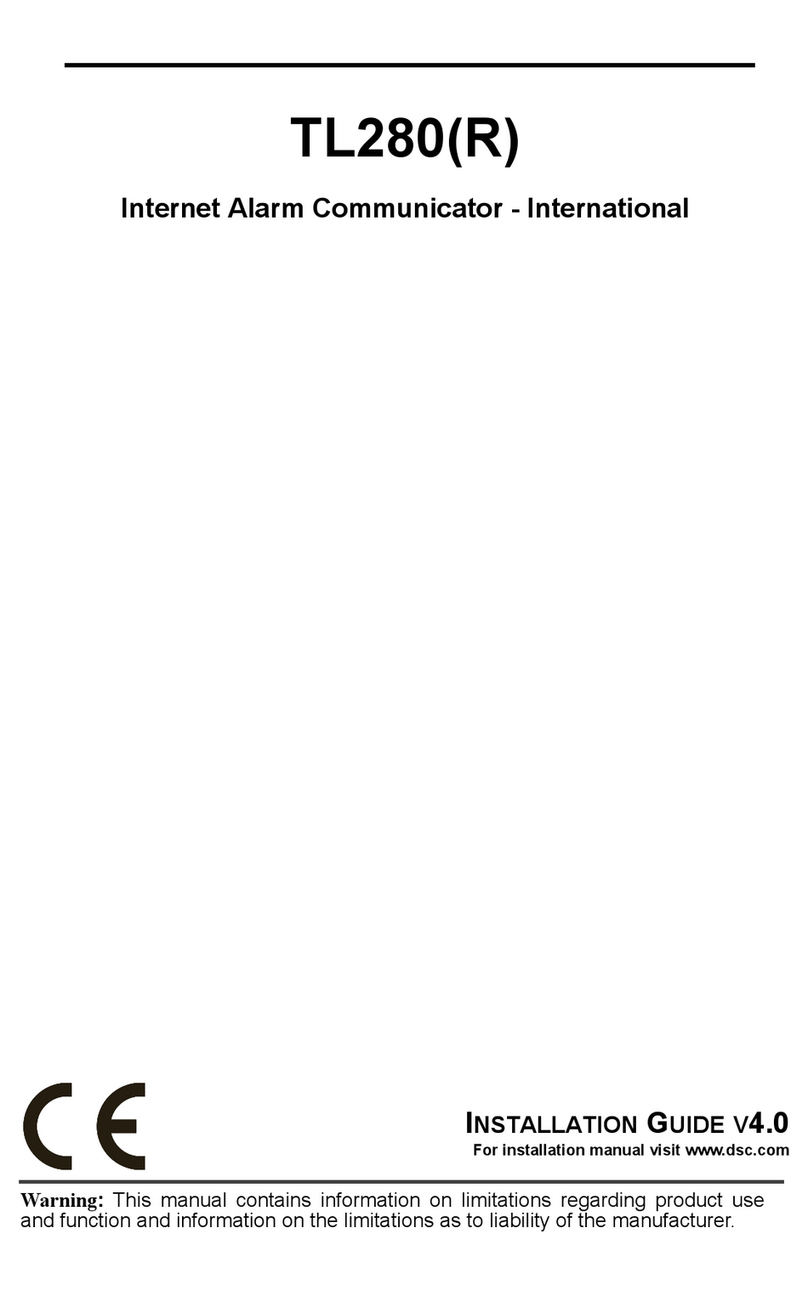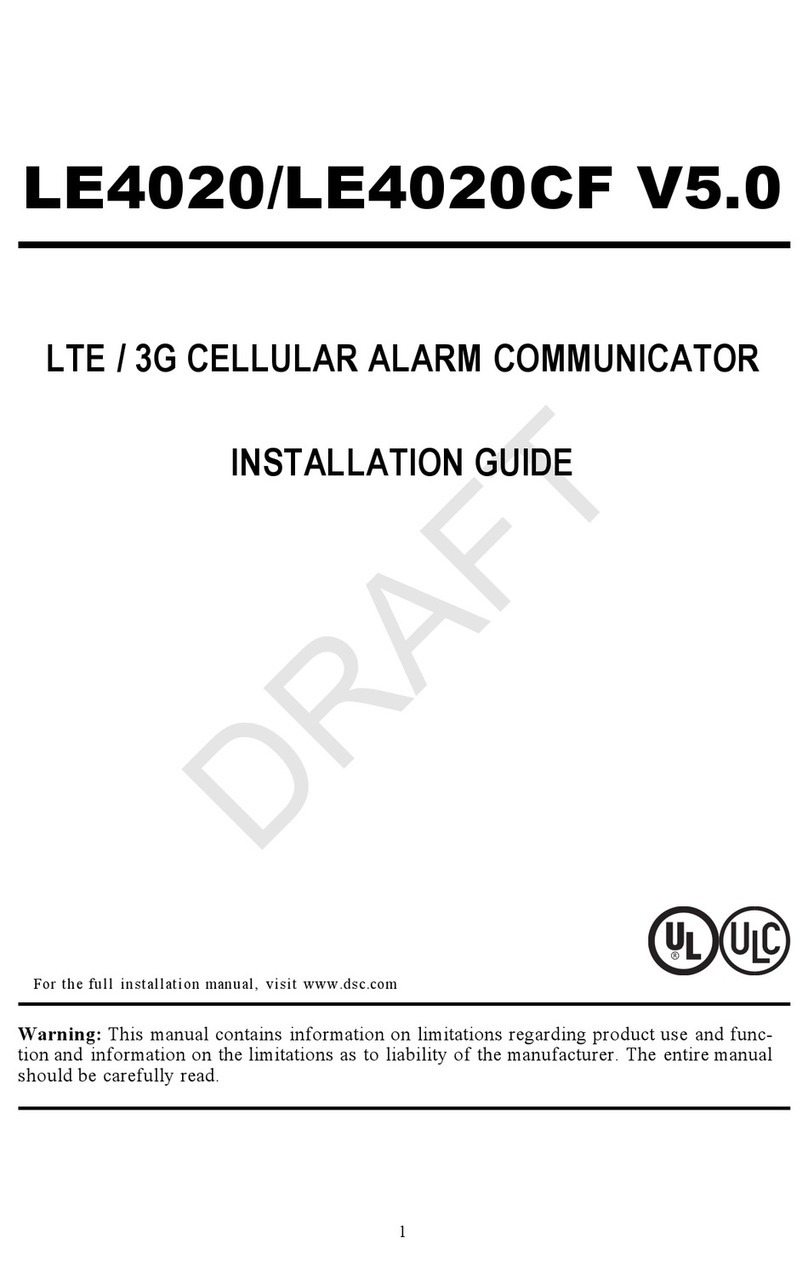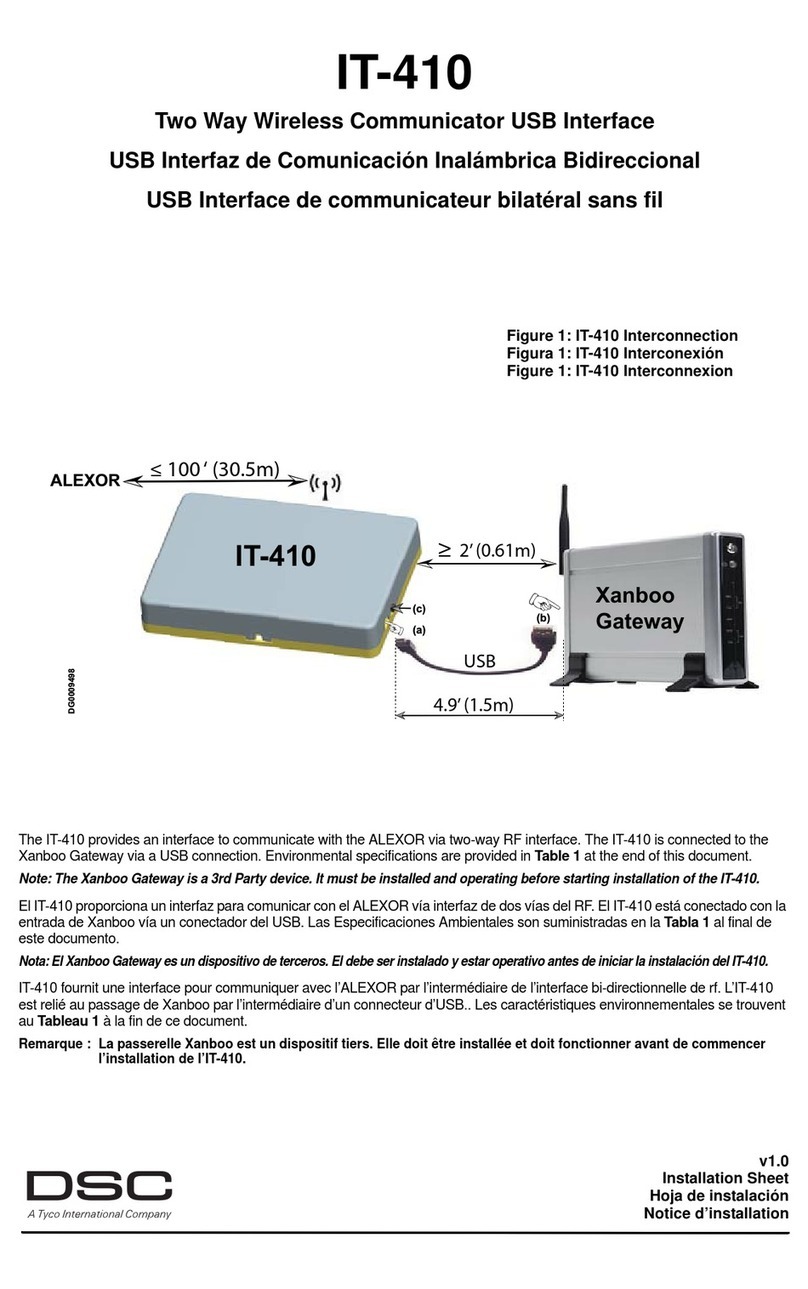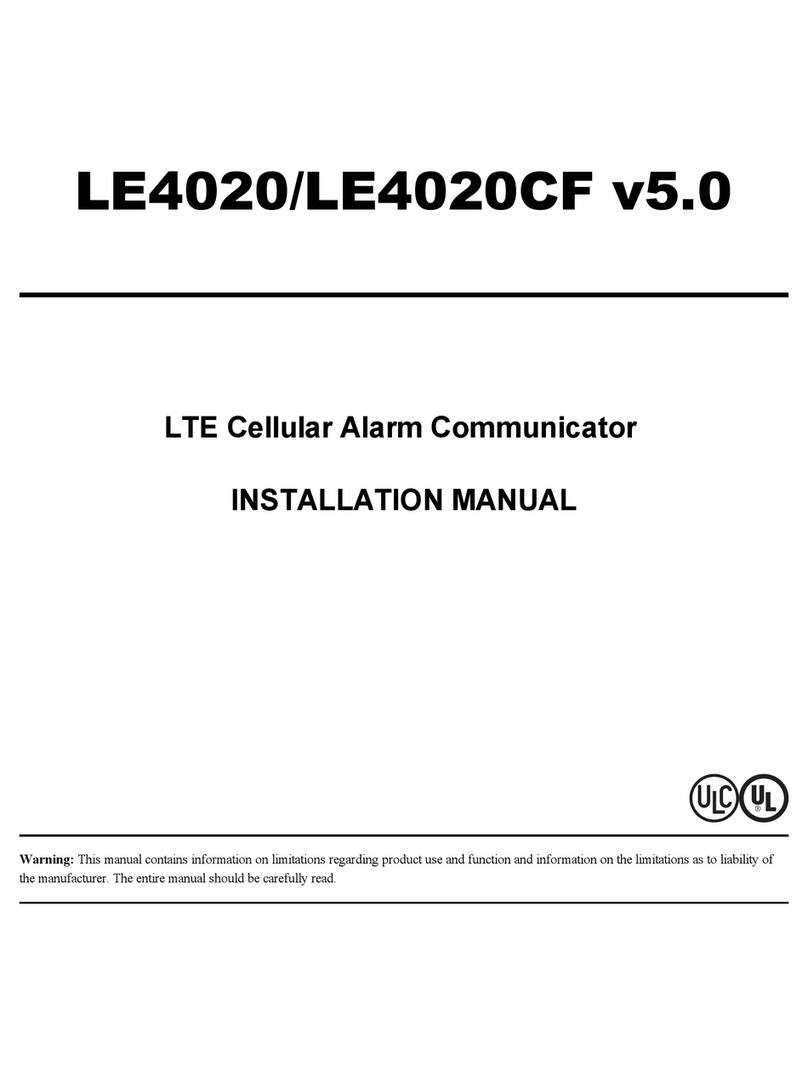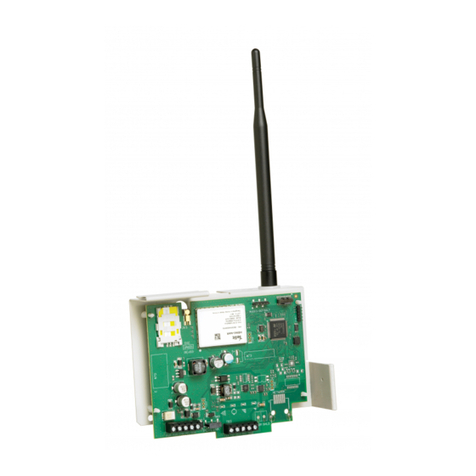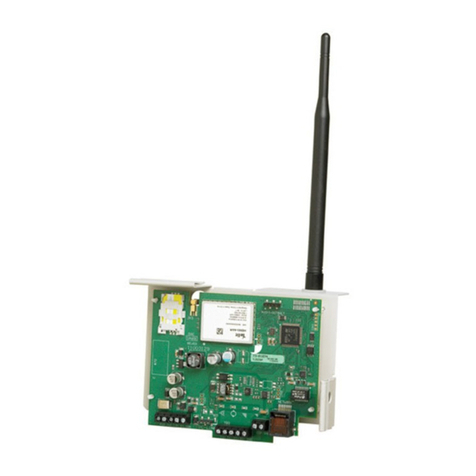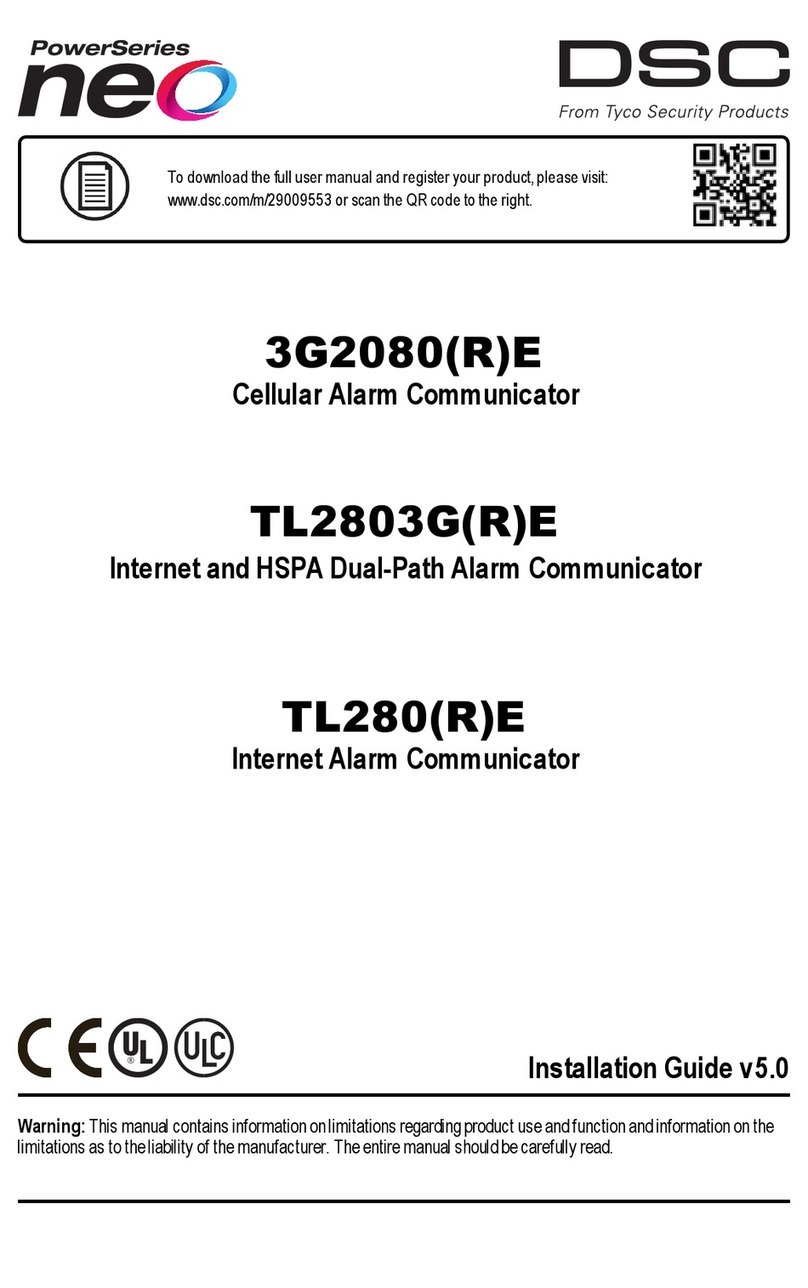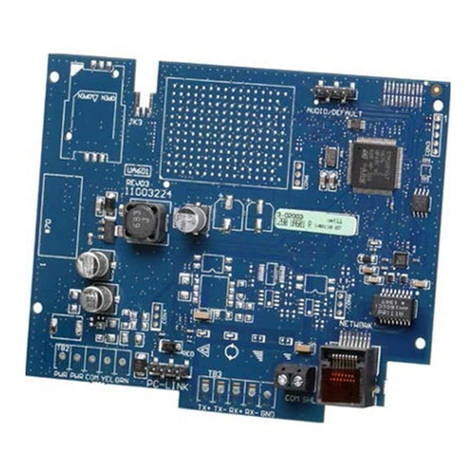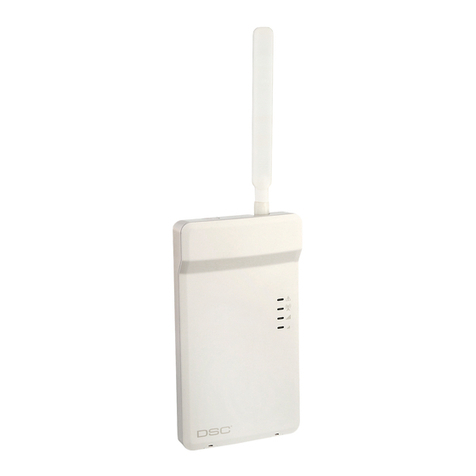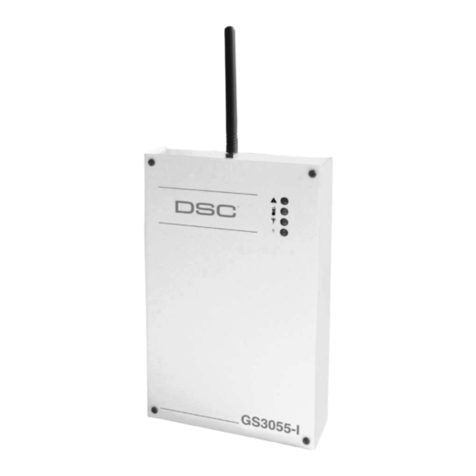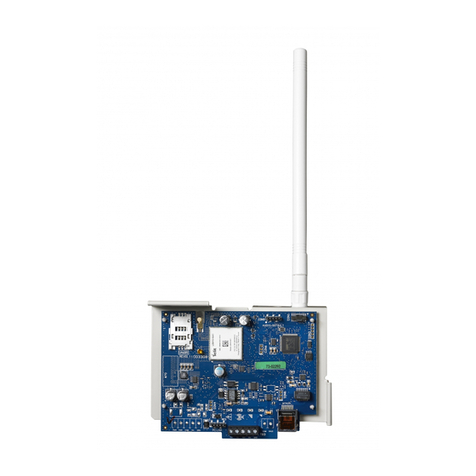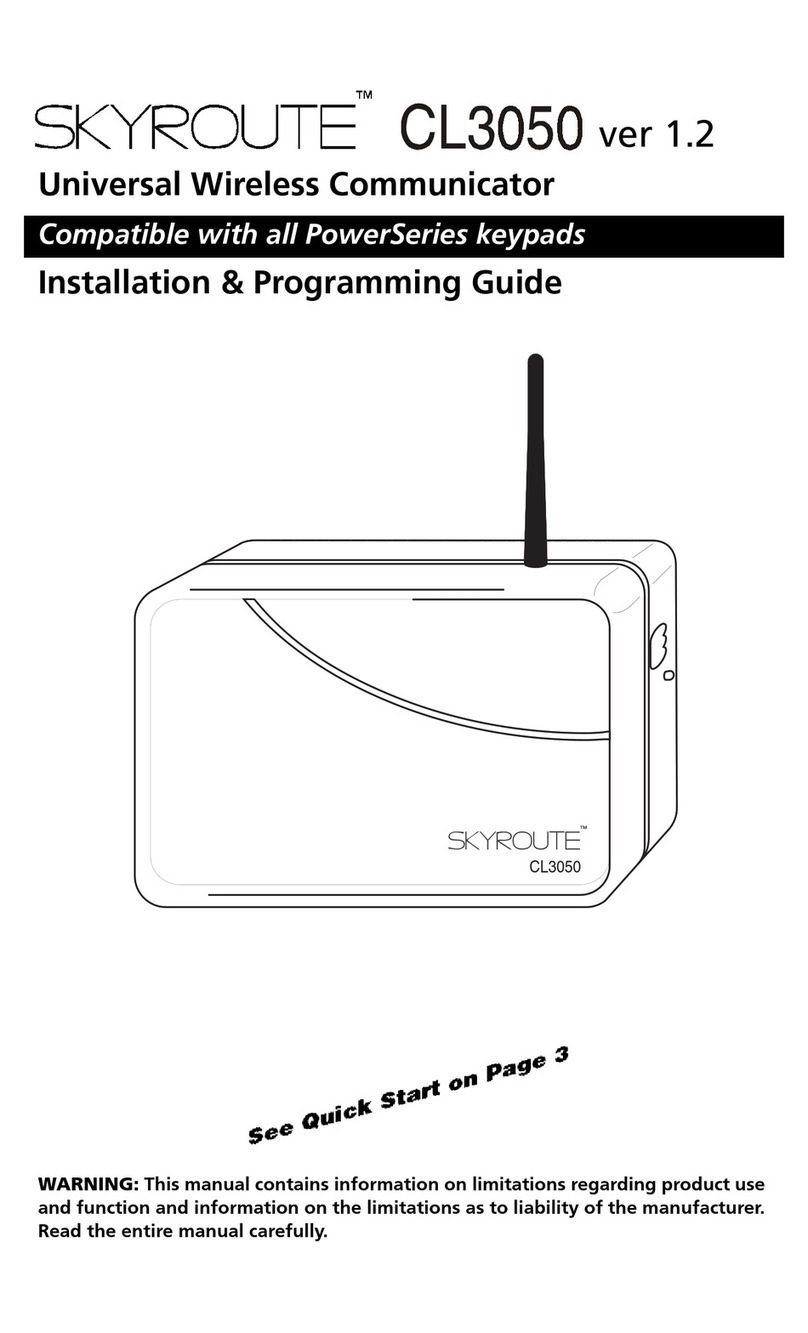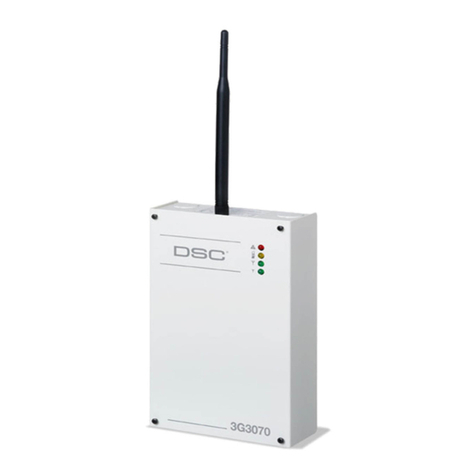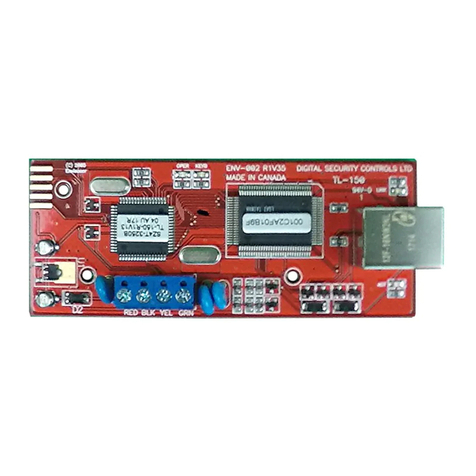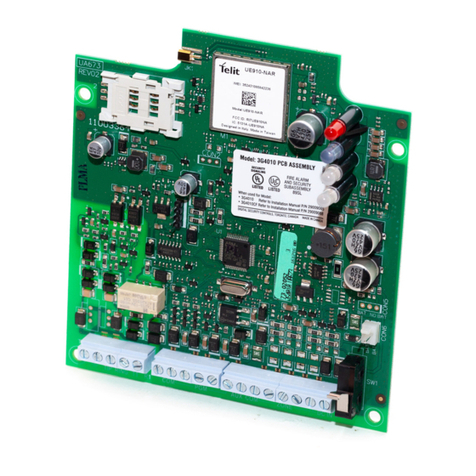
Connecting the 3G4010CF
(1) Earth Ground - This terminal must be connected to the Mains Earth, in order to comply with the Telecommunications
Network Safety Standards (Overvoltage Protection Requirements).
TIP (2) / RNG (3) External Telephone Line - These terminals must be connected directly to the incoming telephone line.
T1 (4) / R1 (5) Internal Telephone Line - These terminals must be connected to the TIP and RING of the control panel.
COM (6,12) Common - This terminal is connected internally to Power Ground.
PGM1 (7), PGM2 (8), PGM3 (9), PGM4 (10) Programmable Open-collector Outputs - These outputs can be activated by pro-
grammed events. Refer to ‘Activating the Outputs’ for details. The maximum current sink of each output must not exceed 50mA.
AUX+ (11) Auxiliary 9 to 14V Output- 9 to 12V Output, 100mA PTC Protected. This terminal is used in conjunction with the
PGM outputs to activate a supervision relay. Recommended relay: DSC Model RM-2 or RM1C.
NOTE: Electrical current drawn from this terminal is drawn directly from the power supply. This must be added to the
3G4010CF current when determining the total draw on the hostpanel or power supply.
Z1-Z4 (13-14-15-16) Programmable Inputs - These terminals can be set up to trigger events. Refer to ‘Inputs’ for details.
+12V (19), -12V (20) Device Power Supply - These terminals must be connected to the output of the power supply [10].When
the connections are completed, connectthe Red and Black wires [12] to 12V, 7Ah battery [13].
Power Supply Module
AC - Supervised input, connect the secondary of the transformer to these terminals. Connect the primary of the transformer to a
dedicated electrical circuit.
DC IN (17), (18) - Special application output circuit, power limited, connect to 3G4010CF power input circuit. Connect
the +12V output to +12V input on the 3G4010CF module and the COM output to the - 12V input on the 3G4010CF module.
ACT (AC Trouble) - This open collector output activates when an AC Trouble is detected: Rated 50mA.
NOTE: AC Trouble output shall be connected to an input on the alarm control panel that provides immediate local annun-
ciation and delayed remote transmission for 1 to 3 hours. Ifsuch input is not able to provide the delay for AC loss transmission,
input 1 of the 3G4010CF can be used. When Input 1 is triggered, the 3G4010CF will immediately announciate an AC trouble
by flashing the RED status LED 9 times, and will delay the AC loss event transmission by one hour.
LBT (Battery Trouble) - This open collector output activates when a Battery Trouble condition is detected: Rated 50mA.
TEST (Charger Trouble) - This open collector output activates when the charging circuit is in a trouble condition: Rated 50mA.
These outputs shall be connected to zone inputs of an alarm control panel in order to provide the required trouble supervision
(visual and audible indication required at the control panel). The outputs are active low (switched to ground) and can be con-
nected to a control panel directly or by using a listed supervision relay (suggested model: DSC, RM-2 or RM1C relay).
+BAT/-BAT - This connector is used to connect the standby battery, non-power limited. Use single lead battery wire assembly
provided.
NOTE: When disposing of batteries, follow the instructions and precautions printed on the batteries, and contact your municipal
offices for information on the disposal of used batteries.
Status LEDs
Operating Modes
The 3G4010CF features two distinct operating modes: Normal Mode and Service Mode. The unit will be in Normal Mode when
the cover tamper is in a restored state. If a cover tamper is present, the unit will be in Service Mode.
Normal Mode
The 3G4010CF interface has four status LEDs. The following describes the status LEDs when the communicator is in normal
operating mode with the front cover in place.
Red
This LED indicates trouble conditions.
On (solid): Trouble requiring service
1 Flash: Wireless Network Trouble
2 Flashes: Battery Trouble
3 Flashes: Input Power Trouble
Blue
This LED indicates cellular radio activity. When this LED is on (solid), a phone line trouble condition
exists. This LED turns on when the interface switches to the wireless network (due to a landline trouble
condition). This LED will also flash once when the 3G4010CF transmits a signal and twice when the
3G4010CF receives a kiss-off from the central station.
NOTE: If the 3G4010CF is programmed to be the primary communicator, the blue LED will remain off,
but will still flash during the signal transmission as described above.
Yellow/Green
(Top)
This LED indicates signal strength and network technology. If the 3G4010CF is operating in over a 2G
channel, the LED will be YELLOW. If the 3G4010CF is operating over a 3G channel, the LED will be
GREEN. When this LED is On, the reception is optimal. This LED switches On only when the bottom
9
